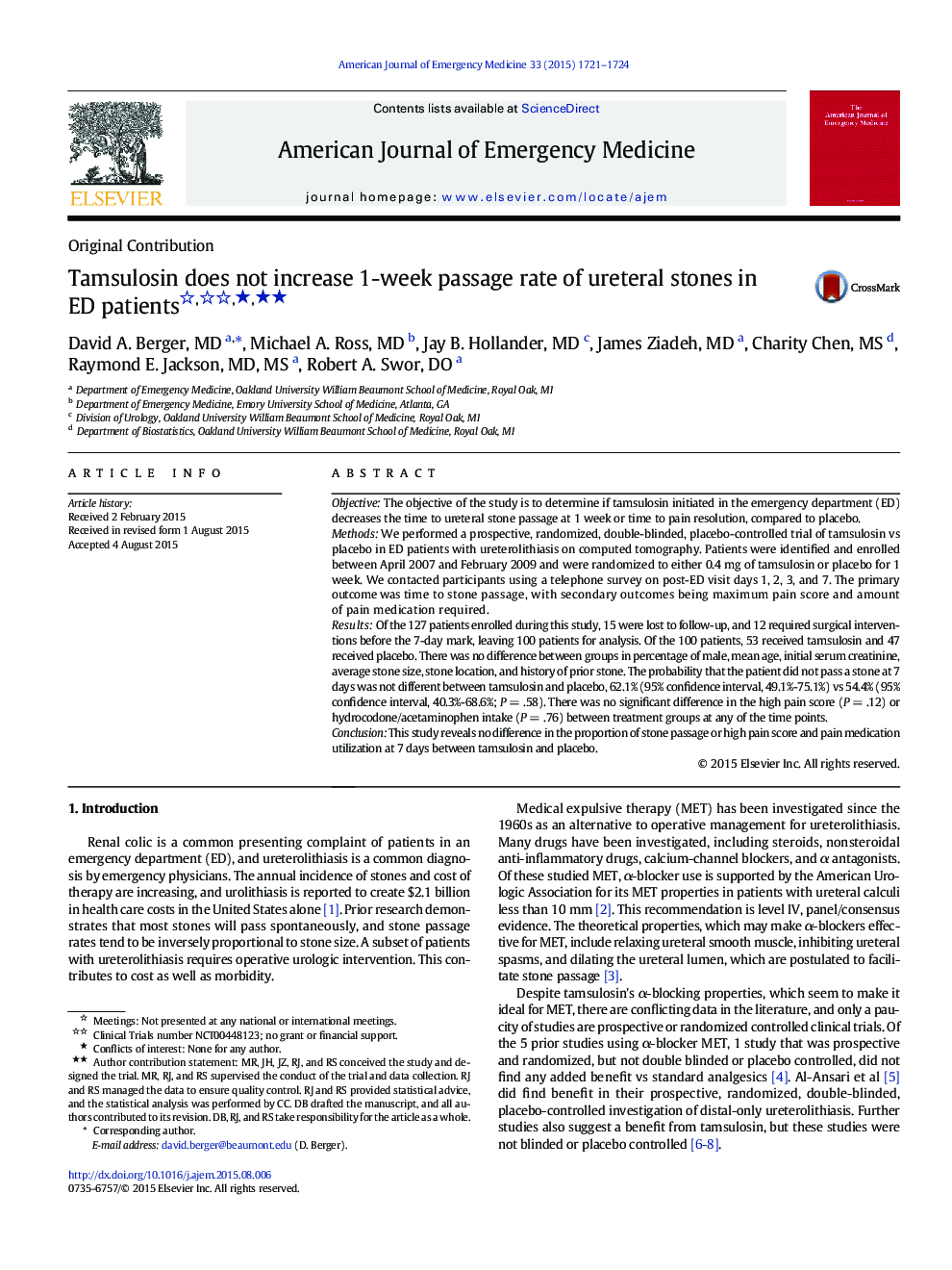| Article ID | Journal | Published Year | Pages | File Type |
|---|---|---|---|---|
| 3223518 | The American Journal of Emergency Medicine | 2015 | 4 Pages |
ObjectiveThe objective of the study is to determine if tamsulosin initiated in the emergency department (ED) decreases the time to ureteral stone passage at 1 week or time to pain resolution, compared to placebo.MethodsWe performed a prospective, randomized, double-blinded, placebo-controlled trial of tamsulosin vs placebo in ED patients with ureterolithiasis on computed tomography. Patients were identified and enrolled between April 2007 and February 2009 and were randomized to either 0.4 mg of tamsulosin or placebo for 1 week. We contacted participants using a telephone survey on post-ED visit days 1, 2, 3, and 7. The primary outcome was time to stone passage, with secondary outcomes being maximum pain score and amount of pain medication required.ResultsOf the 127 patients enrolled during this study, 15 were lost to follow-up, and 12 required surgical interventions before the 7-day mark, leaving 100 patients for analysis. Of the 100 patients, 53 received tamsulosin and 47 received placebo. There was no difference between groups in percentage of male, mean age, initial serum creatinine, average stone size, stone location, and history of prior stone. The probability that the patient did not pass a stone at 7 days was not different between tamsulosin and placebo, 62.1% (95% confidence interval, 49.1%-75.1%) vs 54.4% (95% confidence interval, 40.3%-68.6%; P = .58). There was no significant difference in the high pain score (P = .12) or hydrocodone/acetaminophen intake (P = .76) between treatment groups at any of the time points.ConclusionThis study reveals no difference in the proportion of stone passage or high pain score and pain medication utilization at 7 days between tamsulosin and placebo.
